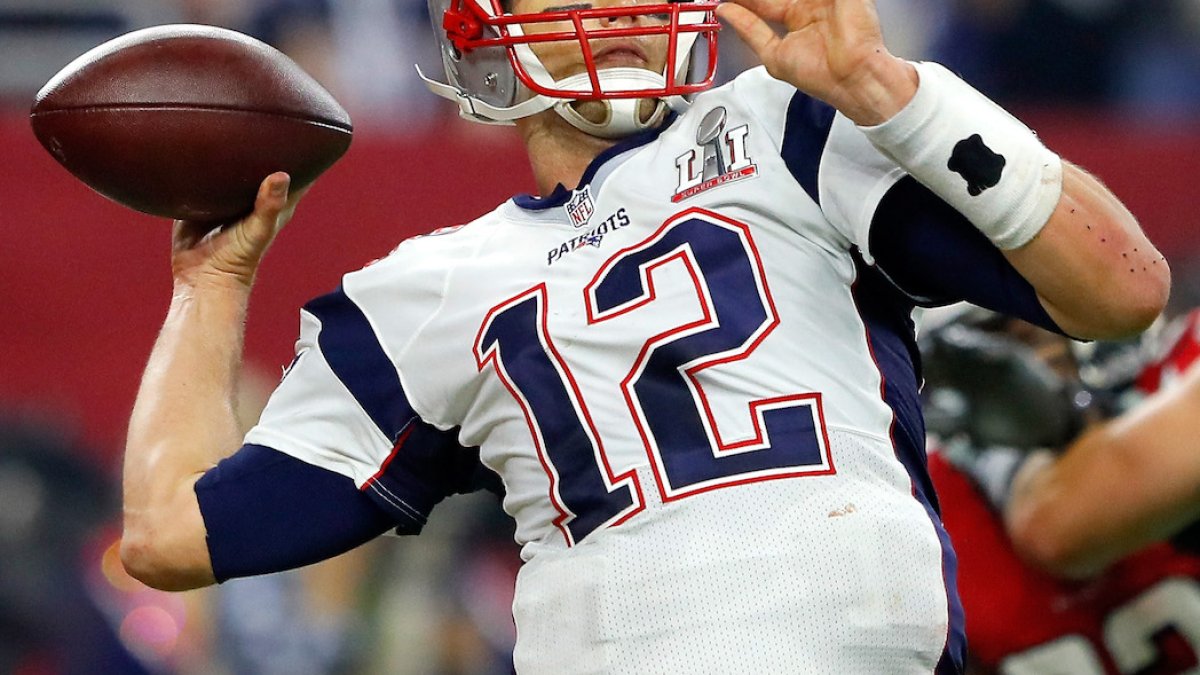The game should have been over.
The league’s highest-scoring offense owned a 25-point lead with 8:31 left in the third quarter. Not only would the Patriots have to put on an offensive clinic they in no way looked capable of, but they would also have to completely shut down the Atlanta offense that was swiss-cheesing their defense.
It was the perfect confluence of ineptitude for New England in the first half. The offensive line was overwhelmed, the receivers couldn’t separate, quarterback Tom Brady was uncharacteristically off, and two turnovers had them behind the eight ball. In a four-score game with 23 minutes remaining, every single possession was a must-win.
And that’s precisely what the Patriots did. Any semblance of the game plan they had offensively heading into the game flew out the window. Brady was in shotgun almost exclusively the rest of regulation (only four snaps under center, three of them runs) and the transition to a short, quick passing game commenced.
#SuperBowl grades recaphttps://t.co/9vPg8jmodV
— PFF (@PFF) February 6, 2017
Easily the most surprising issue for New England early on in the game was Atlanta’s defensive line. To put it bluntly, Patriots LT Nate Solder was getting his butt whipped. He was responsible for a ludicrous 10 QB pressures throughout the first 37 minutes of the game. At that point in the third quarter, Brady had been under pressure on 14 of his 32 dropbacks (43.8 percent). That’s a sizable jump from the 30.5 percent he had seen in his 14 games prior this season. Brady’s average time before release on those dropbacks, though, was 2.67 seconds, another noticeable increase from his 2.54 average time before the Super Bowl.
With the added emphasis on getting rid of the ball quicker, though, Brady’s time to throw dropped to 2.43 seconds over his final 38 dropbacks to close out the game. Those callous misses we had seen from Brady in the first half disappeared. On his 33 attempts during the comeback, only two fell incomplete due to being off target from the wide receiver—a ridiculously low rate. He went 26-for-33 for 284 yards, two touchdowns, zero interceptions and a passer rating of 122.7. Those stats are even crazier when you realize that only 206 of those 284 yards (72.5 percent) came prior to the catch. That represents a glaring departure from Brady’s season average of 53.9 percent.
With Brady’s ability to both get the ball out quicker as well to sustain drives, the Falcons' defense became absolutely gassed. They managed to get pressure on Brady only six times over his last 38 dropbacks, and didn’t affect him once on his last 15 dropbacks of the game.
Of course, to execute a comeback of such grandiose proportions, one needs some breaks to go their way. WR Julian Edelman’s amazing, juggling 23-yard catch could just have easily ended up in the hands of Falcons CB Robert Alford, and will likely go down as the most improbable Super Bowl catch since David Tyree's helmet grab for the Giants in Super Bowl XLII. It also took two timely sacks—one from Dont’a Hightower that forced a crucial fumble, and another from Trey Flowers that took them out of field-goal range. It was flawless football all around.
One of the most difficult things to do in the NFL is run an effective offense when you’re forced to be one-dimensional. Tom Brady proved once again that no one can match his ability in that regard. He engineered four straight scoring drives with little to no legitimate threat of the run in what was the greatest comeback in Super Bowl history.



 © 2024 PFF - all rights reserved.
© 2024 PFF - all rights reserved.